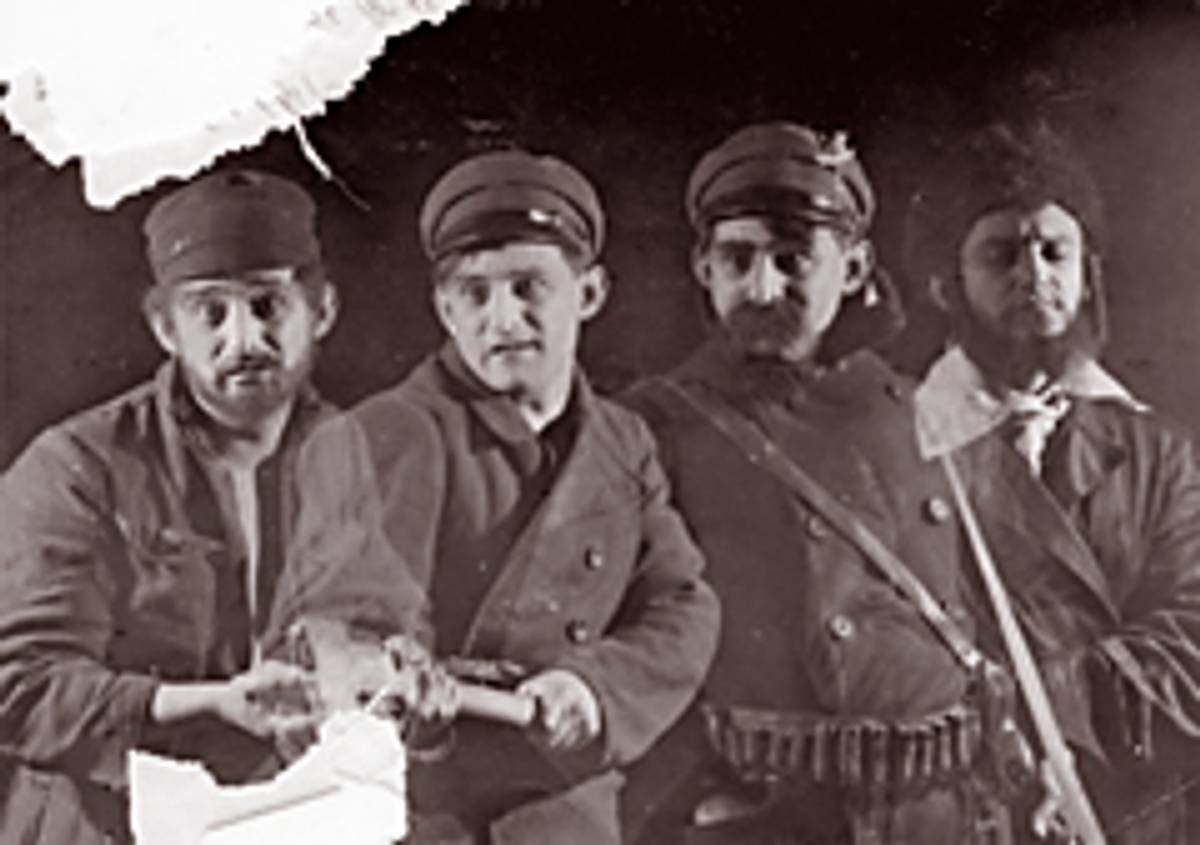

The first issue of The Jewish Daily Forward, or the Forverts, as it was long known to most of its readers, hit newsstands on April 22, 1897, 110 years ago this Sunday. As Pete Hamill notes in his introduction to A Living Lens, a book of photographs culled from the newspaper’s extensive archives and destined for coffee tables across Long Island, the paper was not the first aimed at a Yiddish-speaking audience, but within 30 years, it had become the most successful, selling about 250,000 copies a day.
A Living Lens, edited by the Forward‘s current arts and culture editor (and sometime Nextbook contributor) Alana Newhouse and tied to an exhibition at the Museum of the City of New York, contains over 500 pictures—a neat peek into the history of both the paper and the worlds it covered. And yet, even with an array of lucid essays—by Ruth Wisse, J. Hoberman, Ilan Stavans, and Jenna Weissman Joselit, among many others—the book hints at more stories than it tells. Some of the most intriguing images give us no more than a brief glance at what was, in many ways, the Forward‘s chief competition for the hearts and minds of its newly arrived audience—the Yiddish theater, a bustling entertainment and business whose influence and stars would trickle into Broadway, Hollywood, and beyond.
Though the first Yiddish theater companies weren’t founded until the late 1800s, their roots lay as far back as the Middle Ages. As told by Joel Berkowitz, a Jewish studies professor at the University of Albany and author of Shakespeare on the American Yiddish Stage, “There had been an amateur—which doesn’t’ mean necessarily bad—performance tradition for hundreds of years, in terms of the Purimspiel, much of it improvised, some scripted.” Still, until the 1800s, Jewish theater remained a strictly seasonal event, constrained by two traditional laws: a woman could not perform in public, and men (as well as women) were forbidden to cross-dress. “If you’re going to have a year-round theater, then all the performers and characters have to be male, which takes a lot of interest out of it,” says Berkowitz.
It wasn’t until after the Jewish Enlightenment, or Haskalah, that adherence to those laws began to loosen. Widely acknowledged as the father of Yiddish theater, Russian-born poet and playwright Abraham Goldfaden was living in Romania in 1876 when he became one of the first to gather a permanent, professional troupe of actors and actresses. Before him, “There were sporadic efforts to professionalize, but Goldfaden makes it stick,” Berkowitz notes. Soon after, Yiddish theater became an international event; when 3 million Jews fled the pogroms and restrictions of Russia for London and the United States, they brought Yiddish theater along.
The Forward was by no means a simple booster for Yiddish theater, but rather one of its toughest critics, as Stefan Kanfer notes in his lively history of the Yiddish stage, Stardust Lost. At the paper’s helm for most of its first 50 years was Abraham Cahan, best known today for his classic novel of immigration and assimilation, The Rise of David Levinsky—written, it should be noted, in English. Cahan’s own opinions of theater were not unlike those held by the novel’s beautiful Anna Temkin, the daughter of a Hebrew poet, who looks to plays for “moral force and beauty,” and dismisses those without it as “mere froth.” Many of the shows found downtown were, indeed, unabashed trash, or shund, to use the Yiddish term—soapy melodramas, musicals, and vaudeville—though more and more playwrights and performers would eventually answer Cahan’s call for more serious fare.
Not that Cahan’s tastes are evidenced—or even mentioned—in A Living Lens. Some faces will be familiar to anyone who’s ever waxed nostalgic for the heyday of the Lower East Side—Boris Thomashefsky, Paul Muni, and Molly Picon—but for all those stars there are many more whose names have been forgotten, if they ever were well-known to begin with.